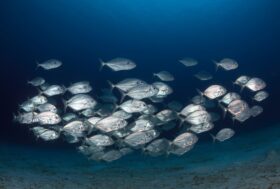Sequencing knowledge within a science curriculum

Adam Stubbs, Teacher of Science and Maths; Evidence Leader in Education, Park View School, UK
Designing a curriculum forces decisions to be made about the importance and value of different ideas while structuring their progression over time. As subject experts, teachers are well placed to plan, structure and sequence the curriculum. However, the subject expertise necessary to design a curriculum can cause teachers to succumb to the curse of knowledge, whereby their thought processes are biased by virtue of their expertise. The way in which a teacher conceptualises, sequences and processes knowledge differs from that of a novice learner, which influences how they identify, conceptualise and sequence ideas (Birch et al., 2017). This causes teachers to recognise patterns and ideas to which students are unable because they don’t have such a well-developed schema. As teachers conceptualise subjects differently to students, their innate ideas about sequencing topics are likely to be biased towards the mental structures that they have. The manner in which a teacher conceptualises ideas is not necessarily the optimal way to sequence these to learners (Kirschner, 2009). This causes two main challenges in science. Firstly, how do teachers sequence ideas in science? Secondly, what impact does this have on curriculum design?
Sequencing from concrete to abstract
Teachers are more likely to fall foul of the curse of knowledge where, by virtue of their well-developed schemas, they can see patterns and connections between ideas that novice learners cannot. This can permeate through an ‘epistemological’ approach to curriculum design, whereby knowledge is sequenced based on how topics relate to each other within the subject, such as a chronological progression of ideas, or based on conceptual development – building from atoms to bonding, then structure and chemical properties, for example. This microscopic to macroscopic approach makes sense scientifically; however, sequencing topics in such a way relies upon students grasping abstract concepts before moving onto the macroscopic world. By relying upon abstract foundations, misconceptions can more readily go unnoticed, making it more challenging for students to transferThe processes of applying learning to new situations More understanding from abstract to real-world concrete examples (Kirschner, et al., 2016). This problem is then exacerbated as scientific concepts interrelate, meaning that misconceptions within fundamental concepts such as particles, electrons or cells can end up impacting subsequent topics.
Many secondary science curricula begin with using these abstract fundamental ideas such as atoms, cells and electrons, which are then built upon to explain scientific phenomena. This makes logical sense to experts as they have well-developed schemas and experience in manipulating these abstract ideas in science; however, novice learners do not, and abstract topics are more likely to contain misconceptions, which means that misconceptions can build up. Instead of beginning with abstract microscopic topics, introducing concrete macroscopic phenomena first allows students to better grasp ideas and minimises the development of misconceptions. One method with which to do this begins the curriculum with concrete topics before then progressing to topics at the abstract level. Flipping the order in which these topics are sequenced enables more concrete representations to be used first. This ensures that when ideas are introduced, students have firmer, real-world foundations to build upon and interpret. Using concrete representations before moving onto pictorial and then abstract notions is commonplace when introducing abstract ideas, such as in early maths tuition, and can be applied equally to sequencing knowledge, ideas and topics within science (De Bock et al., 2011).
Sequencing from concrete to abstract – an example
Taking chemical bonding, structure and properties as an example, one common approach to sequencing these topics is to begin with teaching the nature of the particles and atoms in Key Stage 3, before moving onto chemical bonding in Key Stage 4, and then using ideas about bonding to teach the structure and properties of different chemicals. This is a microscopic to macroscopic approach, starting with abstract concepts before moving to real-world macroscopic properties, and can be sequenced as a conceptual progress across topics from Key Stage 3 to 4. Although this is a logical progression, it relies fundamentally upon the students’ concept of abstract ideas (atoms and bonds). Any misconceptions or differences in understanding at the atomic level will therefore impact student understanding throughout the topic. An alternative method is to begin with concrete, real-world understanding first before delving down into the abstract topics – for example, beginning by teaching the differences between types of matter and their chemical properties, then teaching chemical structure, and finally introducing the abstract topic of chemical bonding last. Sequencing topics throughout a two-to-five-year curriculum from macroscopic to microscopic prevents abstract notions and misconceptions from developing early on and impacting future understanding.
Developing student fluency
One feature of expertise in science is the ability to fluently transition between abstract and concrete representations to explain phenomena, such as using abstract ideas like electrons and charge to predict and explain how electrical current differs in series and parallel circuits. Organising topics in a curriculum sequence from concrete to abstract ideas (from physical electrical circuits to circuit diagrams and then electron movement) allows learners to transition from concrete to abstract ideas but not necessarily vice versa. To complete the sequence, students should be supported to practise using their understanding of abstract ideas to build back and explain concrete phenomena too. Once students have moved from studying concrete to abstract ideas, then moving back to apply their understanding of abstract ideas to concrete ones helps to develop fluency. This is called semantic waving and helps students to transition between abstract and concrete representations (Maton, 2013).
Sequencing different types of knowledge
When selecting knowledge to include within a curriculum at a topical or lesson-specific level, distinctions between types of knowledge can help to decide how to sequence ideas effectively. One distinction splits knowledge into core versus hinterland (Counsell, 2018; Ashbee, 2021). Within a curriculum, the core knowledge is considered to be the key components that are most essential and is often closely related to course and assessment specifications. This includes the definitions, ideas and key facts that students are expected to know. However, science education is more than merely retrieving exam requirements, and there is much knowledge that can be deemed to be essential to give students a well-rounded science education and experience; this is the hinterland. In GCSE science, students are expected to be familiar with microorganisms, bacteria and disease. This is the core knowledge. They aren’t required to study the story of Ignaz Semmelweis, a 19th-century doctor who was vilified, discredited and eventually committed to an asylum for promoting basic hygiene and handwashing in hospitals. The story of Semmelweis isn’t part of the core curriculum, but it can be considered a fundamental part of hinterland knowledge in science. It won’t be examined directly in a GCSE science exam, but it is a widely important story to enrich the students’ understanding of the scientific method and the nature and history of science and infectious diseases.
Hinterland aspects are the types of knowledge that many teachers intersperse sporadically throughout their lessons. Distinguishing between the core and hinterland is vital because the sequence of them can influence learning and retention. Hinterland knowledge can interest students and can enrich their experience, but it can also interfere with their learning and retention of core knowledge. This is known as the seductive details effect. Introducing lessons with seductive ideas (information that is there to pique interest but isn’t the core part of the lesson) can reduce the amount of core knowledge that students retain. However, changing the order and moving seductive hinterland knowledge to the end of a lesson, or the back of a topic, can significantly reduce this effect, allowing core knowledge to be protected while also enabling the hinterland aspects to be explored (Harp and Mayer, 1998). In this way, differentiating between that which is core and that which is hinterland enables knowledge to be sequenced better, increases retention and enriches students’ scientific understanding and experience.
Implementation
Logistical decisions about timetabling can have knock-on effects on sequencing, as learning is affected by the regularity of intervals between which students re-encounter ideas, known as the spacing effectThe benefit to learning of including gaps between study and ... More (Gluckman et al., 2014). For example, whether students have separate lessons for biology, chemistry and physics or whether science is timetabled as one combined subject where students study each individual subject in blocks can impact upon the spacing of knowledge. Timetabling science as one subject, with students learning in blocks of biology, then chemistry, then physics, reduces the frequency with which students encounter topics. However, when science is timetabled as three separate subjects, content is spaced out across the three, which increases the number of times students encounter material. This exploits the spacing effect.
Although a carefully sequenced curriculum can affect student learning, expending significant time and effort in designing the curriculum without an equally detailed focus on subject-specific pedagogy is likely to prove futile. The principles discussed rely upon teachers engaging with their subject at a fine-grain level to make decisions about sequencing topics but also ideas within topics. A well-designed curriculum may include many opportunities for spaced retrieval that are designed to increase learning and retention. However, if misconceptions develop early in the process and go unnoticed, then any techniques to increase retention may invertedly be reinforcing misconceptions too, reversing any potential benefits, particularly as science is hierarchical and many topics build upon each other. This means that individual topics are rarely standalone, and any misconceptions in one topic can proliferate across the entire curriculum.
Analysing the common misconceptions, errors and mistakes in topics and in related topics is a useful method with which to aid decisions about the sequence and selection of knowledge within a curriculum. By probing common errors, it is possible to modify the curriculum to elicit their causes and minimise their proliferation. Resources such as the RADAAR framework and BEST can support curriculum planning by sequencing curricula with misconceptions and common errors in mind (Kaiser, 2021).
- Ashbee R (2021) Core and hinterland. In: Curriculum: Theory, Culture and the Subject Specialisms. Abingdon: Routledge, pp. 50–51.
- Birch S, Brosseau-Liard P, Haddock T et al. (2017) A ‘curse of knowledge’ in the absence of knowledge? People misattribute fluency when judging how common knowledge is among their peers. Cognition 166: 447–458.
- Counsell C (2018) Taking curriculum seriously. Impact 4.
- De Bock D, Deprez J, Van Dooren W et al. (2011) Abstract or concrete examples in learning mathematics? A replication and elaboration of Kaminski, Sloutsky, and Heckler's Study. Journal for Research in Mathematics Education 42(2): 109–126.
- Gluckman M, Vlach H and Sandhofer CM (2014) Spacing simultaneously promotes multiple forms of learning in children's science curriculum. Applied Cognitive Psychology 28(2): 266–273.
- Harp SF and Mayer RE (1998) How seductive details do their damage: A theory of cognitive interest in science learning. Journal of Educational Psychology 90(3): 414–434.
- Kaiser N (2021) EEF Blog: Supporting curriculum planning in science. Available at: https://educationendowmentfoundation.org.uk/news/eef-blog-supporting-curriculum-planning-in-science (accessed 10 September 2021).
- Kirschner PA (2009) Epistemology or pedagogy, that is the question. In: Tobias S and Duffy TM (eds) Constructivist Instruction: Success of Failure. Abingdon: Routledge, pp. 144–157.
- Kirschner PA, Sweller J, Clark RE (2016) Why Minimal Guidance During Instruction Does Not Work: An Analysis of the Failure of Constructivist, Discovery, Problem-Based, Experiential, and Inquiry-Based Teaching. Educational Psychologist 41(2): 75-86.
- Maton K (2013) Making semantic waves: A key to cumulative knowledge-building. Linguistics and Education 24(1): 8–22.










